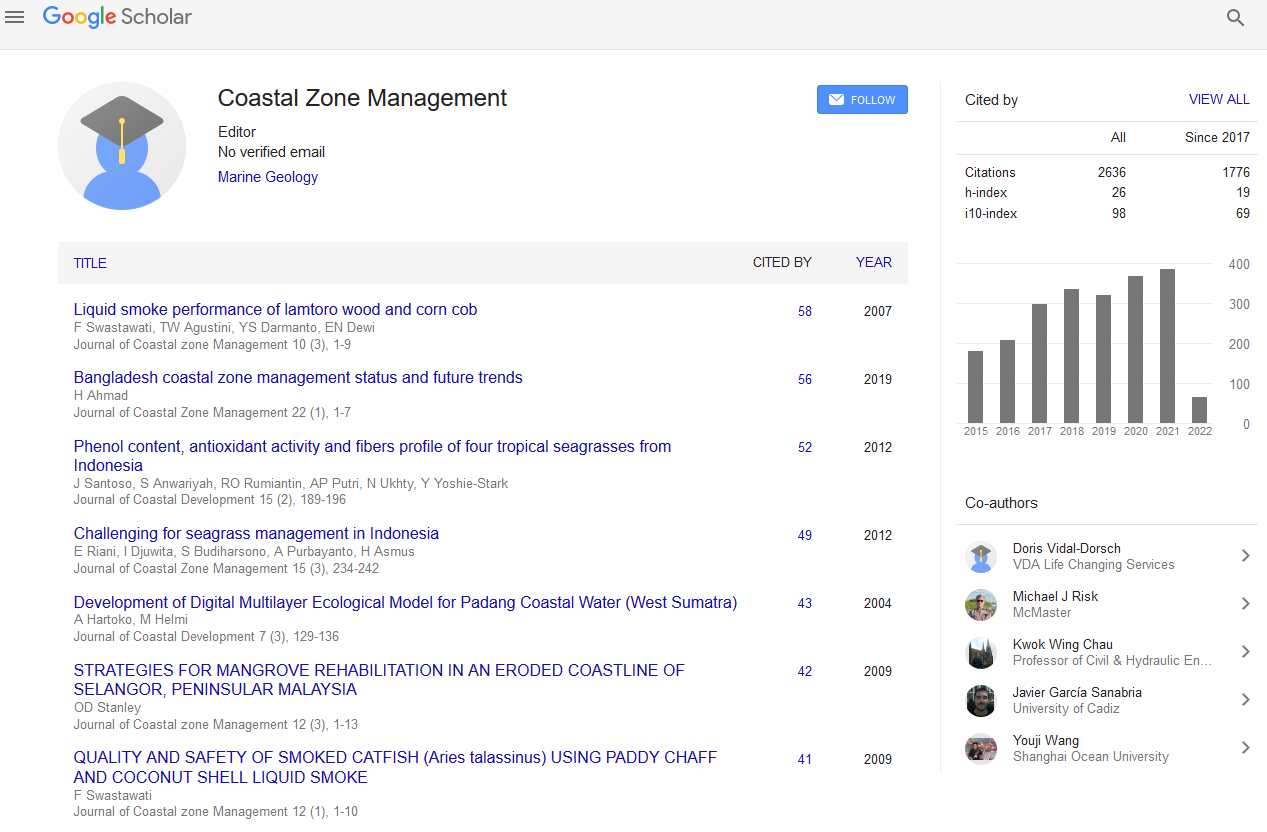Indexed In
- SafetyLit
- RefSeek
- Hamdard University
- EBSCO A-Z
- OCLC- WorldCat
- Publons
Useful Links
Share This Page
Journal Flyer

Open Access Journals
- Agri and Aquaculture
- Biochemistry
- Bioinformatics & Systems Biology
- Business & Management
- Chemistry
- Clinical Sciences
- Engineering
- Food & Nutrition
- General Science
- Genetics & Molecular Biology
- Immunology & Microbiology
- Medical Sciences
- Neuroscience & Psychology
- Nursing & Health Care
- Pharmaceutical Sciences
Abstract
Historical Mining Signatures: Geochemical and Mineralogical Evaluation of Sediments in three Coastal–Estuarine Systems
The X-ray fluorescence (XRF) of the inter-tidal sediments in Hayle, Gannel and Camel estuaries in southwest England’s coasts are examined here to evaluate and compare the broad geochemistry of each of the three systems. The total base cation content (Na, Mg and K) of the samples in all of the estuaries is 5% while the Ca is ~>20%. In terms of sub-environment significance, the estuarine and inlet sediments of Hayle exhibit a high content of Ca than the coastal/beach samples while both the Gannel’s estuarine and beach samples exhibit ~25% of Ca composition. There is high variation in the dimension of Ca in the different sub-environments sampled in Camel estuary (outerestuary – 25-28%, mid-estuary - ~20%, inner – 30%). The Al and Fe contents in all of the sites are below 2% except in Camel where Al is around 3.5%. There clear difference in the percentage of composition of trace elements among the estuaries is also evident. Sn’s concentration in Hayle is higher than that of Camel and Gannel. Pb, Ba, Zr and Zn is significant in all of the estuaries at various degrees - Pb and Zn are abundant in Gannel, while Sn, W, Zr prominent in Camel. The significant effect of the release of the particulate mine waste are observed in the samples’ mineralogical composition despite the cessation of the mine activities in the 19th/early 20th Century, suggesting that these elements are still bio-available and bio-active for riverine processes to transport/migrate in the estuary–coast interaction.

